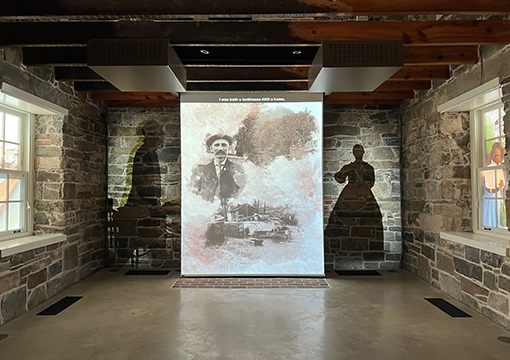The Lockkeeper’s House is the oldest building on Washington D.C.’s National Mall, which includes structures like the Washington Monument and Lincoln Memorial. The building is a 350-square-foot 2-story stone structure that once stood beside 2 Washington canals.
The National Parks Service wanted to showcase the history of the House and the events it witnessed to breathe life into the recently re-opened building. They wanted to use audiovisual and interactive technology to replace a series of static plaques and bring the visitor experience into the digital age.
A dynamic video that tells the story through the eyes of the House and its occupants is projected onto a single screen and the original stone wall beside it. Two projectors precisely positioned for correct viewing in the restricted space are carefully concealed below the wooden rafters.
To deliver the audio for the film and other visitor information, four speakers are also installed in the rafters. To compliment the larger audio and visual experience, interactive touchscreen tablets provide visitors with deeper background information on historic events, people and locations around the House.
All the technology is controlled by a rack located in the basement with all power, data and signal cabling creatively routed through to the floor above. The result is a creatively engineered solution that provides an immersive, interactive experience with minimal impact on the historical structure.










.jpg?width=1500&height=995&name=ELC501_N17_medium%20(1).jpg)






